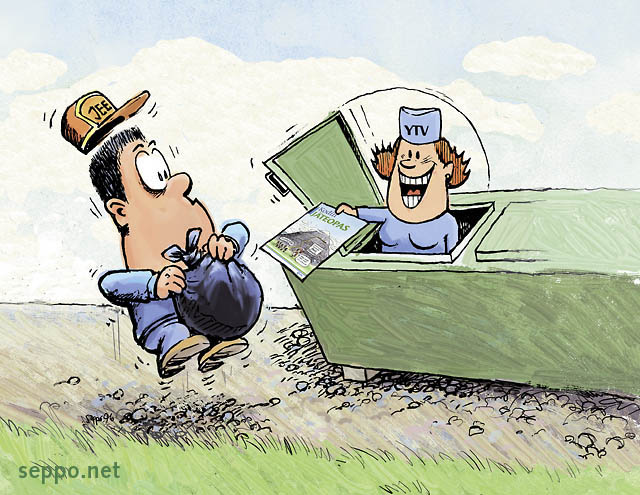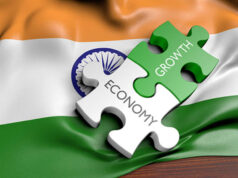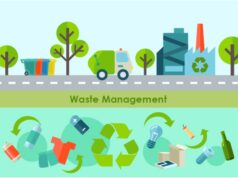Recently, I happened to pass by the infamous Ghazipur landfill. Unaware and hence nescient, I assumed it to be a hillock with trucks travelling along organised pathways on the ‘hillock’. Imagine my surprise on finding out that the said ‘hillock’ was actually a well established dump and the trucks scaled its length frequently to add more dump to the dump! The structure gracing the Delhi skyline along with the likes of Qutub Minar is symbolic of our general attitude towards waste- Waste out of sight is waste out of mind. The vision of a Swachh Bharat has grappled the entire nation, from our currency to our day to day conversations, Swachh Bharat is everywhere. The idea of Swachh Bharat prompts us to keep our surroundings clean. But is it enough to get rid of the garbage from your vicinity?
What has the Swachh Bharat narrative been about and what are its results?
Swachh Bharat has long had a very singular narrative. The campaign is heavily target driven and limited its scope, by placing its focus on achieving toilet construction targets, and lower stress on the cultural and social obstructions to its use, while paying little or no stress on other important methods of waste management. Even as citizens, many of us associate Swachh Bharat abhiyan with clean surroundings and toilets, and not with how the waste is treated or managed.
India generates 62 million tonnes of solid waste annually, of which only 60% of the household waste is collected, out of which only 15% of urban India’s waste is processed. The opportunity cost of this waste is humongous. While the collection statistics themselves are disappointing, the post-collection figures pose an even more disparaging. There has never been an authentic and extensive study on the opportunity costs of India’s waste, thus it is difficult to estimate how much money India is bleeding by wasting its waste. According to a business research organisation Novonous, Mumbai alone will have a waste market of 13.62 billion $ by 2025.
Missed Opportunities
The Total capacity of production of compost from municipal waste in India is 54 lakh tonnes, but so far only 15 lakh tonnes out of it is being utilised. Similarly, the power generation capacity from solid waste is about 600 MW, out of which only 92 MW is being generated. While other power generation plants and composting units are under-construction, the under-utilisation of the existing infrastructure underscores the flaws in implementation and the poor planning.
Waste management is not diversified, due to the low stress on waste processing and the lack of incentives attached to waste processing. Waste generation in India is expected to grow to a massive 165 million tonnes per annum by 2030, and India cannot handle so much trash. Not unless the likes of Ghazipur landfill start mushrooming. While remedying the problems of open defecation is pertinent, waste processing poses an equally important, and fatal issue which cannot be avoided anymore
Why its narrative needs to change
As long as people see waste as waste their effort will be to try to hide it. But where will this waste go? Even if it goes out of sight (and mind), it is still harmful. Why are beautification and aesthetic pleasure the only benefits we tend to associate with the Swachh Bharat Abhiyan? The narrative fails to establish the importance of waste, and how it can be profitably and optimally used to create value while also preventing the potential harm it could cause to the environment. Putting forth a different narrative does not require mollifying the existing one, instead it promotes a parallel narrative which would complement the existing one and go a step further.
There have been innovators and entrepreneurs who saw value in waste and exploited this value to generate wealth. The benefits of innovation in waste are two fold- the monetary benefits for the innovator/ entrepreneur, in addition to the society at large which reaps the environmental and aesthetic benefits of the innovation.
Zhang Yin, the Chairwoman and Founder of Nine Dragons was China’s, and possibly even the world’s, richest self-made woman during 2006-2007. The Queen of Trash’ amassed her fortune by recycling waste paper. Another inspiring waste story is that of a Taipei based firm Miniwiz housing a Trash Lab which has turned waste into fabrics, construction materials and most ambitious of all- the wings of a two-seater aeroplane.
Finding value in waste is not a novel idea in India which has various door-to-door collectors of recyclable wastes. India’s kabadiwalaahs find value in waste. But their operations remain highly unorganised and hence not very profitable. A proactive Swachh Bharat Abhiyan could proactively organise the waste market in India by collecting trash as the raw material through private partnerships with our friendly neighbourhood kabadiwallahs, who have an admirably good permeability in all parts of the country.
What needs to change
Swachh Bharat campaign should be an endeavour to end the stigma associated with processing and reusing waste. As part of the Swachh Bharat Abhiyan, waste needs to be incentivised better in order to encourage entrepreneurs to enter the ‘trash market’. Keeping this in mind, Research and Development need to be ingrained in the very framework of Swachh Bharat Abhiyan.The likes of Trash Lab need to become the norm and not the exception.
Waste can be profitable and Swachh Bharat has to move beyond meeting targets and bring about systemic changes which not only welcome innovation, but promote it. The most sustainable solution to waste management is waste processing by creating a formal marketplace for waste. It’s time to take trash seriously, and to start talking trash!
Post Disclaimer
The opinions expressed in this essay are those of the authors. They do not purport to reflect the opinions or views of CCS.






